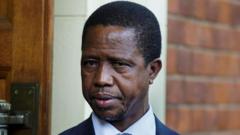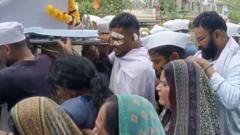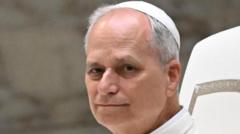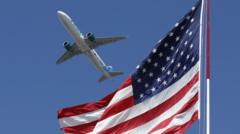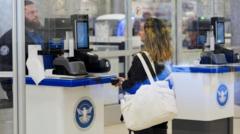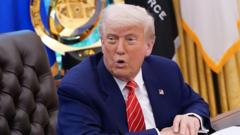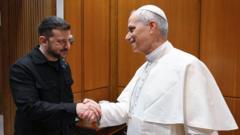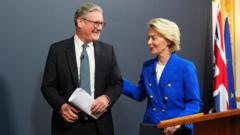The funeral of Pope Francis raises both solemnity and challenges, highlighting the intricacies of international diplomacy in seating arrangements as leaders from conflicting countries come together.
Funerals and Foreign Relations: The Challenge of Seating at Pope Francis' Funeral

Funerals and Foreign Relations: The Challenge of Seating at Pope Francis' Funeral
A complex arrangement unfolds as global leaders gather for a final farewell amidst geopolitical tensions.
In an open-air ceremony to honor Pope Francis, who passed away at the age of 89, the Vatican faces a considerable challenge in seating arrangements, particularly due to the diverse mix of foreign delegations attending—from leaders of countries with notable tensions to those of mutual respect. As the pontiff led the church for more than a decade, his passing has attracted dignitaries from around the world, including the president of Ukraine and a minister from Russia, as well as representatives from Israel and Iran.
To manage the expected diplomatic strain, the Vatican has made use of a time-tested protocol: seating guests alphabetically according to their nations' names in French. This systematic approach not only simplifies the seating process but also underscores the ecclesiastical principle of equality among nations. At St. Peter’s Square, the reign of protocol will see foreign dignitaries grouped into categories—including monarchs, heads of state, and various dignitaries—descending in precedence from reigning monarchs to ministers.
While Italy and Argentina’s heads of state enjoy the closest seats to the altar, the seating arrangement does not eliminate the potential for awkward encounters. The president of the United States, likely seated between leaders from Estonia and Finland, could find himself in the midst of diplomatic discomfort, particularly due to the ongoing conflict in Ukraine and his past relations with Russia.
A look at past funerals and gatherings highlights the unpredictable dynamics that can arise from such mixed seating—examples abound, like when former President Trump found himself adjacent to President Macron during the Notre-Dame Cathedral reopening or next to President Obama at Jimmy Carter’s funeral.
Ultimately, while the Vatican’s structured approach may mitigate some concerns, the international community will be watching closely as leaders gather to honor Pope Francis, revealing the complexities of global diplomacy amid mourning.
To manage the expected diplomatic strain, the Vatican has made use of a time-tested protocol: seating guests alphabetically according to their nations' names in French. This systematic approach not only simplifies the seating process but also underscores the ecclesiastical principle of equality among nations. At St. Peter’s Square, the reign of protocol will see foreign dignitaries grouped into categories—including monarchs, heads of state, and various dignitaries—descending in precedence from reigning monarchs to ministers.
While Italy and Argentina’s heads of state enjoy the closest seats to the altar, the seating arrangement does not eliminate the potential for awkward encounters. The president of the United States, likely seated between leaders from Estonia and Finland, could find himself in the midst of diplomatic discomfort, particularly due to the ongoing conflict in Ukraine and his past relations with Russia.
A look at past funerals and gatherings highlights the unpredictable dynamics that can arise from such mixed seating—examples abound, like when former President Trump found himself adjacent to President Macron during the Notre-Dame Cathedral reopening or next to President Obama at Jimmy Carter’s funeral.
Ultimately, while the Vatican’s structured approach may mitigate some concerns, the international community will be watching closely as leaders gather to honor Pope Francis, revealing the complexities of global diplomacy amid mourning.






